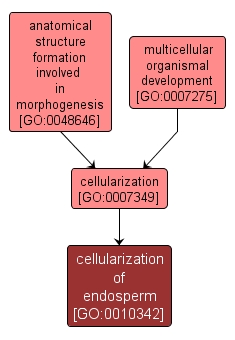| Desc: |
The separation of the multi-nucleate endosperm into individual cells. In many plant species, the endosperm that nurtures the embryo in the seed initially develops as a syncytium. This syncytial phase ends with simultaneous partitioning of the multi-nucleate cytoplasm into individual cells, a process referred to as cellularization. |














